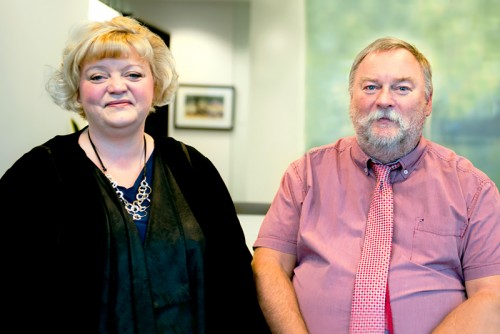How automation is saving the day at the AER
Alberta - October 01, 2017
Depositing money at the bank, checking into a flight, or placing an order at McDonalds —what doesn’t have an automated kiosk these days? Well, the Alberta Energy Regulator (AER) doesn’t, but it does have OneStop—a new technology that is automating old systems at superhero speed.
OneStop was born as a solution to a simple but very real problem for the AER, industry, and the public. Reviewing the steady stream of incoming applications with human power alone was taking too long, resulting in a two-year wait time for some applications. OneStop cut this wait time down to a matter of hours while also making it easier for everyone to understand the AER’s decisions.
The power of this platform was recently recognized at the 2017 Global Architectural Excellence Awards when it took home first place for architectural excellence in energy and utilities and garnered recognition for the AER’s architects and chief technology officer.
But this superhero tool wasn’t born overnight.
The Transformation
Not long ago, the regulator used technologies such as business intelligence, geographic information system, and data integration to support various areas of business. For instance, business intelligence was used to develop the Fox Creek area surface allocation map and the latest version of ST 98: Alberta's Energy Reserves and Supply/Demand Outlook.
While each of these tools meant something to the AER, OneStop brought them together for the first time.
Landowners are smart. They want to know what’s happening in the landscape around them.
Paul Ferensowicz
Forming the Avengers
If each of these tools were previously considered “superheroes,” the creation of OneStop made them into the AER’s “Avengers.” Together, this system is using its powers to transform one process at a time.
For example, when land is reclaimed, energy companies must submit an application to the AER for a reclamation certificate. Before OneStop, each application had to be reviewed manually. This soon caused a backlog of 2600 applications.
That backlog was quickly defeated by OneStop. In a matter of hours, 2100 applications were granted reclamation certificates. That’s because OneStop uses rules to determine the risk of an application. Low-risk applications now move through the system more quickly, while high-risk ones are funnelled towards AER employees for review.
“OneStop allows our people to use their time and talents on high-level work, while computers take care of the more straightforward applications,” says Paul Ferensowicz, senior advisor for major projects in the AER’s operations division.
Superhero Results
Tara Mulrooney, chief technology officer for the AER, says feedback from industry has been positive.
“I’m amazed at how industry has responded,” she says. “There’s a huge demand for more digital transformations of our processes—the reclamation certificates were just the beginning.”
In fact, OneStop will speed up other AER systems such as public land distributions, license amendments, and water act approvals, just to name a few. It’s also saved $85 million thanks to quicker approvals for reclamation certificates because operators are no longer paying leases on land that they’ve already reclaimed.
Albertans benefit too.
“Landowners are smart. They want to know what’s happening in the landscape around them,” says Ferensowicz. “For example, users can zoom in on an area of Alberta through the tool and see which sites have received reclamation certificates.”
Mulrooney adds that in this day and age, a world-class regulator has to be a digital regulator.
“We can spend less time on administrative work and more time analyzing the data; that makes us a more strategic, proactive, and responsive regulator,” says Mulrooney.
While you need a username and password to access OneStop, you can learn more about the tool by visiting https://www1.aer.ca/onestop/
Sarah Elliot, Writer



